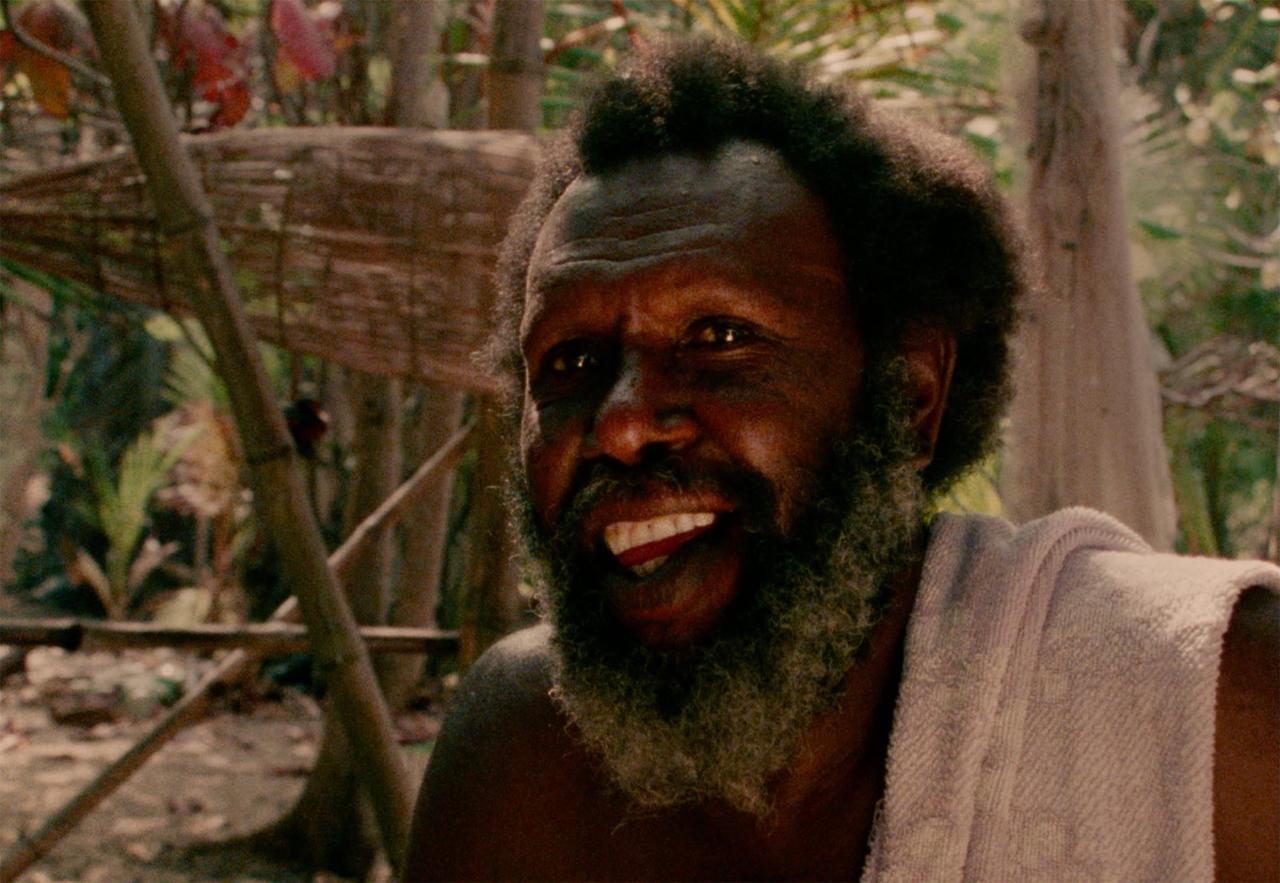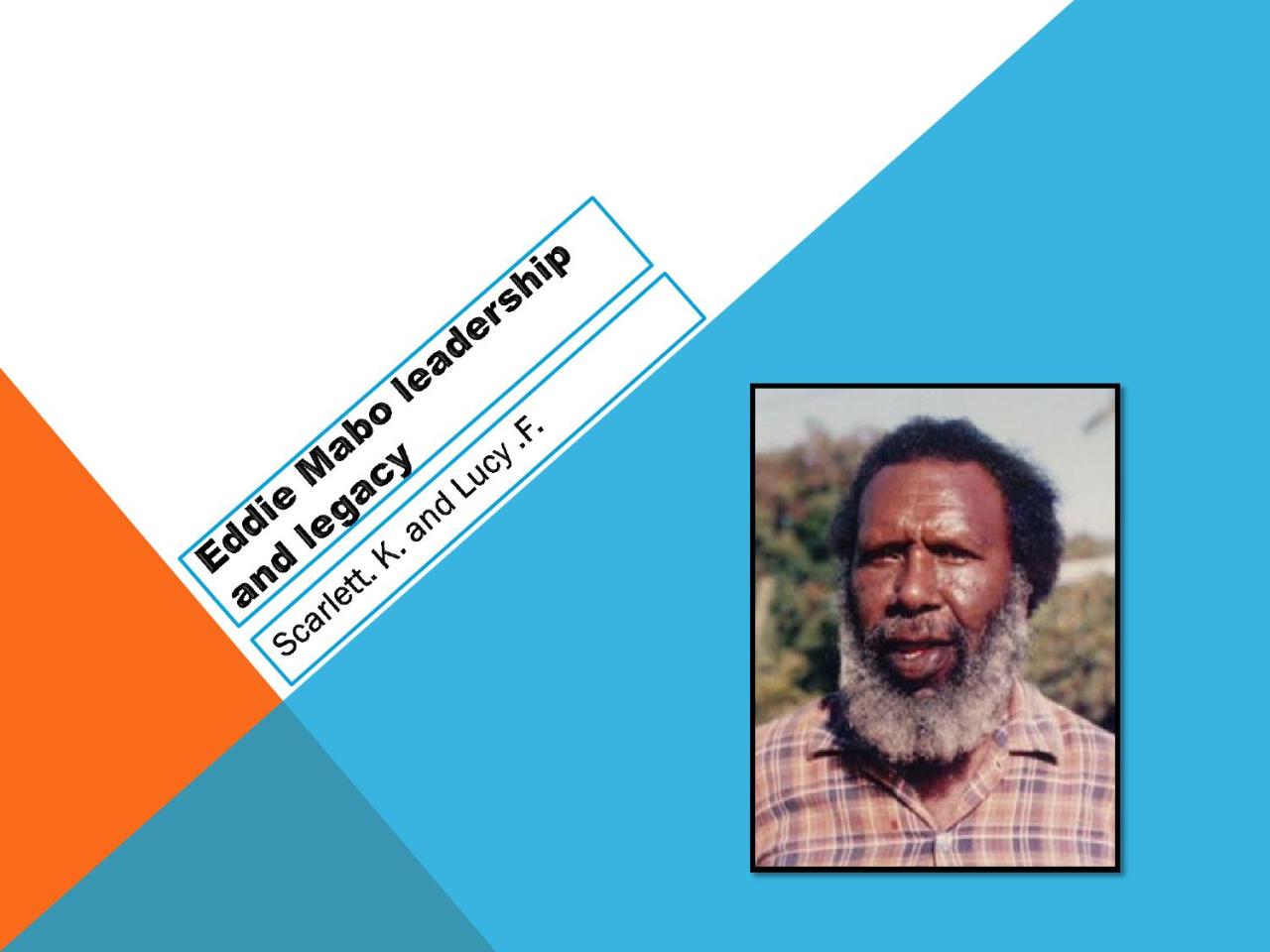Where Was Eddie Mabo Born sets the stage for this enthralling narrative, offering readers a glimpse into a story that is rich in detail and brimming with originality from the outset. Delve into the life and legacy of Eddie Mabo, a pioneering figure in the Indigenous land rights movement whose birthplace on Mer Island in the Torres Strait would forever shape his destiny.
Eddie Mabo’s birthplace, Mer Island, holds immense significance as the ancestral home of the Meriam people. This isolated island, nestled amidst the azure waters of the Torres Strait, is steeped in cultural heritage and tradition, serving as a sanctuary for the Torres Strait Islander community.
Birth Place and Ancestry

Eddie Mabo’s birthplace on Mer (Murray) Island in the Torres Strait holds profound significance. Mer Island, a remote and beautiful island located in the northeastern tip of Australia, is the traditional home of the Meriam people, to whom Mabo belonged.
Mer Island is a small, low-lying island with an area of approximately 15 square kilometers. It is surrounded by a coral reef and has a tropical climate. The island is home to a diverse range of flora and fauna, including sea turtles, dugongs, and a variety of bird species.
Cultural Heritage and Significance
Mer Island has a rich cultural heritage and is of great significance to the Torres Strait Islander community. The Meriam people have a deep connection to the land and sea, and their culture is based on traditional fishing, hunting, and gathering practices.
The island is also home to a number of important cultural sites, including ancient burial grounds and sacred ceremonies.
Ancestral Connections
Eddie Mabo was a direct descendant of the Meriam people. His father, Benny Mabo, was a traditional elder and leader of the Meriam community. Mabo’s mother, Daisy Kaierea, was also a Meriam woman. Mabo’s family had lived on Mer Island for generations, and he was deeply connected to his ancestral homeland.
Historical Context

Eddie Mabo’s birth in 1936 coincided with a period of significant political and social upheaval in Australia. The country was still grappling with the legacy of British colonialism and the concept of terra nullius, which held that Australia was an empty land before European settlement.
This doctrine had devastating consequences for Indigenous Australians, who were denied basic rights and freedoms. They were forcibly removed from their traditional lands, their cultures were suppressed, and they faced widespread discrimination and prejudice.
Indigenous Rights Movement, Where Was Eddie Mabo Born
In the decades leading up to Mabo’s birth, a growing Indigenous rights movement had begun to challenge the status quo. Led by Aboriginal activists such as William Cooper and Charles Perkins, the movement sought to secure basic rights and recognition for Indigenous Australians.
- The movement gained momentum in the 1960s and 1970s, leading to a number of significant legal and political victories.
- In 1967, a referendum was held to amend the Australian Constitution to include Indigenous Australians in the census and allow the Commonwealth to make laws for them.
- In 1972, the Aboriginal Land Rights Act was passed, granting Indigenous Australians the right to claim ownership of their traditional lands.
These victories were a major step forward for Indigenous rights, but the fight for equality was far from over. Eddie Mabo’s own legal battle for land rights would become a landmark case in the history of Indigenous rights in Australia.
Early Life and Influences
Eddie Mabo was born on Mer Island in the Torres Strait, a remote island community located between Australia and Papua New Guinea. He was raised in a traditional Meriam Mir community, where he learned the customs, language, and traditions of his people.From
a young age, Eddie showed a deep connection to his community and a strong sense of identity. He spent much of his time fishing, hunting, and gathering with his family and elders, learning the skills and knowledge necessary for survival on the island.
Born in 1936 on the remote island of Mer, Eddie Mabo’s legacy lives on in the fight for Indigenous land rights. Speaking of innovation, the Russell Hobbs Satisfry Air And Grill Multi Cooker revolutionizes home cooking with its versatility and ease of use.
Eddie Mabo’s story reminds us of the importance of standing up for our beliefs, just like the Russell Hobbs Satisfry Air And Grill Multi Cooker stands out in the kitchen.
He also participated in traditional ceremonies and rituals, which played a vital role in shaping his worldview and aspirations.
Family and Community Influences
Eddie’s family and community played a significant role in his upbringing and development. His parents, Benny and Maggie Mabo, were respected members of the community, and they instilled in Eddie the importance of family, tradition, and cultural identity.Elders in the community also had a profound influence on Eddie.
They shared their knowledge of Meriam Mir history, culture, and law, which helped Eddie to develop a deep understanding of his people’s connection to the land and sea.Through his interactions with family, elders, and community members, Eddie Mabo developed a strong sense of belonging and a commitment to preserving his people’s way of life.
Activism and the Land Rights Movement

Eddie Mabo’s activism and involvement in the land rights movement were sparked by a personal experience. In 1971, he was arrested for trespassing on his traditional land on the Murray Islands in the Torres Strait. This incident ignited his determination to fight for the recognition of Indigenous land rights.
Born on Mer (Murray) Island in the Torres Strait, Eddie Mabo was a prominent Aboriginal activist who played a crucial role in the landmark Mabo v. Queensland (No. 2) High Court case. Interestingly, this issue of land rights and Indigenous identity has some parallels to the frustrating Matchmaking Error #1 Fortnite , where players encounter difficulties in finding suitable opponents.
Nevertheless, Eddie Mabo’s legacy as a tireless advocate for Indigenous rights remains an inspiration to this day.
The Mabo Case
In 1982, Mabo, along with other Indigenous plaintiffs, launched a legal challenge against the Queensland government, known as the Mabo Case. They argued that the concept of “terra nullius” (land belonging to no one) was a legal fiction that had been used to justify the dispossession of Indigenous peoples.The
Mabo Case was a landmark case that lasted for a decade. In 1992, the High Court of Australia ruled in favor of Mabo and the plaintiffs. The Court recognized that Indigenous Australians had a form of native title to their traditional lands, which had existed prior to British colonization.
This decision overturned the long-held doctrine of terra nullius and was a significant victory for Indigenous land rights in Australia.
Legacy and Impact: Where Was Eddie Mabo Born
Eddie Mabo’s unwavering determination and groundbreaking achievements have left an indelible legacy on the Indigenous rights movement in Australia and beyond. His contributions have not only transformed the legal landscape but also fostered a profound shift in societal attitudes toward Indigenous peoples and their rights.
Establishment of the Eddie Mabo Foundation
To honor Eddie Mabo’s legacy and continue his mission, the Eddie Mabo Foundation was established in 1993. The foundation is dedicated to promoting Indigenous empowerment and self-determination through various initiatives, including:
- Providing legal assistance and advocacy for Indigenous communities
- Supporting Indigenous education and leadership development
- Promoting cultural preservation and revitalization
li>Advocating for policy reforms that advance Indigenous rights
Ultimate Conclusion
Eddie Mabo’s legacy extends far beyond his lifetime, leaving an indelible mark on the pursuit of Indigenous rights and reconciliation in Australia. The establishment of the Eddie Mabo Foundation serves as a testament to his unwavering commitment to empowering Indigenous communities and fostering self-determination.
While significant progress has been made, the journey towards reconciliation and the recognition of Indigenous rights remains an ongoing one. Eddie Mabo’s birthplace, Mer Island, stands as a poignant reminder of the challenges and triumphs that have shaped the Indigenous experience in Australia.
FAQ Section
Where is Mer Island located?
Mer Island is situated in the Torres Strait, between the Australian mainland and Papua New Guinea.
What is the significance of the Mabo Case?
The Mabo Case was a landmark legal battle that overturned the doctrine of terra nullius, recognizing the rights of Indigenous Australians to own and occupy their traditional lands.
What is the Eddie Mabo Foundation?
The Eddie Mabo Foundation is a non-profit organization established to promote Indigenous empowerment, self-determination, and the preservation of Indigenous culture.